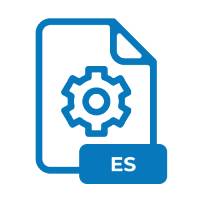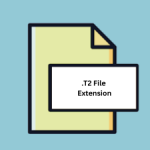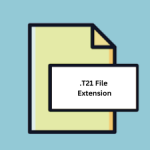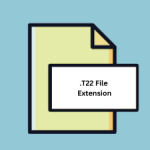.ES File Extension

E-Studio 1.x Experiment File
| Developer | Psychology Software Tools |
| Popularity | |
| Category | Data Files |
| Format | .ES |
| Cross Platform | Update Soon |
What is an ES file?
.ES file extension primarily belongs to files created by E-Studio 1.x software, which is a tool utilized in experimental psychology and cognitive science research. These files store experimental data, configurations, and settings utilized within the E-Studio environment.
Given its niche application, the .ES file format is crucial for researchers and scientists engaged in designing, conducting, and analyzing experiments in various fields.
More Information.
E-Studio emerged as a successor to earlier experimental design software, aiming to provide a more intuitive and feature-rich platform for researchers.
The primary purpose of E-Studio and consequently, .ES files is to facilitate the creation of experiments with precise control over stimuli presentation, response collection, and data logging.
It allows researchers to design experiments ranging from simple reaction time tasks to complex cognitive assessments.
Origin Of This File.
The origin of .ES files can be traced back to the development of E-Prime, a software suite designed for creating and conducting psychological experiments. E-Studio, a component of E-Prime, is specifically tailored for designing experiments.
The .ES files are the output of these design processes, encapsulating the structure, stimuli, conditions, and parameters defined by researchers.
File Structure Technical Specification.
The structure of .ES files is defined by the specifications of E-Studio software. These files are typically binary, containing serialized data representing the experiment’s layout, stimuli, trial structure, timing parameters, and participant response configurations.
The technical specifications may vary between different versions of E-Studio, but generally, .ES files comprise a combination of text-based metadata and binary data representing experiment elements.
How to Convert the File?
Converting .ES files to other formats may be necessary to facilitate compatibility with different software or platforms.
While direct conversion methods may not be readily available due to their proprietary nature of .ES files, alternative approaches can be employed:
- Export Functionality: E-Studio software often provides options to export experiment data in common formats such as CSV (Comma-Separated Values) or TXT (Plain Text), allowing researchers to extract relevant information from .ES files.
- Custom Scripts: Researchers with programming skills can develop custom scripts or programs to parse .ES files and convert them into desired formats. Libraries such as Python’s pandas can be particularly useful for this purpose.
- Third-Party Tools: Explore third-party software or utilities that claim to support .ES file conversion. However, exercise caution and ensure the reliability and integrity of such tools before usage.
Advantages And Disadvantages.
Advantages:
- Customizability: E-Studio offers extensive customization options, allowing researchers to tailor experiments according to their specific requirements.
- Precise Control: Researchers can exert precise control over stimulus presentation, timing, and response collection, ensuring the accuracy of experimental results.
- Data Logging: .ES files facilitate comprehensive data logging, enabling researchers to capture and analyze participant responses with ease.
- Integration: E-Studio integrates seamlessly with other E-Prime components, enhancing the overall experimental workflow.
Disadvantages:
- Proprietary Format: .ES files are specific to E-Studio software, limiting their compatibility with other platforms and tools.
- Learning Curve: Mastering E-Studio and understanding .ES files may require a significant learning curve, especially for novice users.
- Cost: E-Prime, including E-Studio, is a commercial software package, which may pose financial constraints for some researchers.
- Dependency: Users are dependent on the continued support and development of E-Studio by the software provider.
How to Open ES?
Open In Windows
- E-Studio Software: Install E-Studio on a Windows system, and use the software to open .ES files directly. Ensure that the version of E-Studio is compatible with the .ES file format.
- Third-Party Software: Explore alternative software solutions compatible with .ES files. While options may be limited, some third-party tools may offer support for viewing or converting .ES files.
Open In Linux
- Wine: Similar to macOS, Linux users can explore Wine to run Windows applications like E-Studio. However, compatibility and performance may vary, and experimentation may be required.
- Virtualization: Set up a virtual machine running Windows within a Linux environment to access E-Studio and open .ES files seamlessly.
Open In MAC
- Virtualization: Utilize virtualization software such as Parallels Desktop or VMware Fusion to run Windows and E-Studio within a macOS environment. This allows opening .ES files directly using E-Studio.
- Wine: Experiment with Wine, a compatibility layer that allows running Windows applications on macOS. While not guaranteed, some versions of E-Studio might function under Wine, enabling .ES file access.













